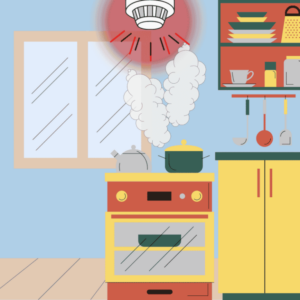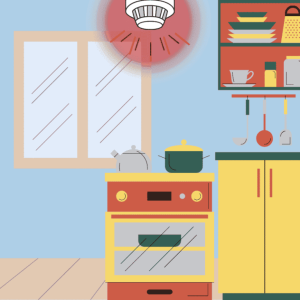Many patients with chronic pancreatitis experience neuropathic pain–a type of pain that happens when your nervous system is not working correctly. The good news is that this type of pain is treatable. You will learn about treating neuropathic pain and different types of pain in this blog post.
This blog post written by Dr. Jay Pasrischa, an expert from Johns Hopkins Medicine, who has spent decades researching the connection between the brain and the gastrointestinal system, chronic inflammation, and visceral pain.
This blog post will answer the following questions:
- How does the body feel pain?
- What are the different types of pain?
- What is nociceptive pain?
- What is inflammatory pain?
- What is neuropathic pain?
- What is pain sensitization?
- How does neuropathic pain present in chronic pancreatitis?
- Is my pain neuropathic?
- Can you treat neuropathic pain?
How does the body feel pain?
Pain is a complex sensation regardless of what causes it. Pain has at least 2 components, especially if it is persistent:
- The sensation that some injury has occurred or is occurring.
- The emotional response to that sensation and contributes to the “suffering” associated with persistent pain.
These two components use different parts of the nervous system.
Here’s How Pain Works
A special type of nerve cell, called the nociceptor, first picks up the sensation that bodily injury or harm has occurred. The nociceptor cell is located next to the spine and has two arms, a long and short arm. The long arm is located in the organ in question (e.g. skin, colon, bone, muscle, pancreas etc.) and the shorter arm goes to the spinal cord. The long arm picks up the injury signal that drives the sensation (excessive temperature, pressure etc.) and relays it via the short arm to nerve cells in the spinal cord that eventually send it to the part of the brain that recognizes the sensation as pain.
These same nerve cells located in the spinal cord also send the same signal to other regions in the brain that elicit the emotional response of aversion to that signal, which help our bodies recognize future harm.
3 Types of Pain
Even though people experience pain differently and each experience is individual, it is possible to categorize the different types of pain. Here’s an overview of some of the different types of pain and what makes each type of pain different:
- Nociceptive Pain. Nociceptive pain is a type of pain that is transient and disappears after the stimulus that initially provoked the pain is removed.
- Inflammatory Pain. Inflammatory pain is the type of pain that occurs when significant inflammation affects an organ.
- Neuropathic Pain. Neuropathic pain, also known as nerve pain, occurs when the nerve fibers become damaged and send pain signals to the brain, despite the organ being normal.
A simple analogy might help illustrate the difference between neuropathic or nerve pain and other types of pains. Imagine that the sensory nerves are a fire alarm. Smoke triggers the fire alarm. If you burn food in the kitchen to create enough smoke the fire alarm will go off. Once you open the windows and clear the smoke away, the fire alarm stops. This is what happens with nociceptive pain. However, if nobody is in the kitchen to open a window, the dish may continue to burn and generate smoke which will cause the fire alarm to continue ringing. This is inflammatory pain. In both these examples the fire alarm is working properly.
Now, imagine that there is a defect in the electrical circuit of the smoke detector such that it trips the alarm even though there is no smoke present. If you were in the other room and you heard the alarm, you would think there is a fire in the kitchen, even though there isn’t any. This is equivalent to neuropathic pain- your brain is receiving signals from faulty (“neuropathic”) nerves and is reacting as though the organ is injured even though it may not be, because the alarm sounds (feels) the same.
How Nerves Sense Pancreatitis Pain
Dorsal Root Ganglion
- Signal Transduction
- Conduction
- Neurotransmitter Release
- Signal picked up by nerves in the spinal cord and sent up to the brain
Nociceptive Pain


Inflammatory Pain

- Smoke in the kitchen makes the alarm go off.
- The alarm continues to go off because the window is not opened and the smoke cannot be cleared.
Neuropathic Pain

- Even though there is no smoke in the kitchen, the alarm goes off.
What is pain sensitization?
The concept of sensitization would add another layer to this analogy. If someone wanted to create a fire alarm that was set to automatically increase the intensity of the sound according to how long the smoke was lingering, they would build in an amplifier that increased the sound with time. In the setting of chronic pain, experts believe the nerves become more sensitive to stimuli, which results in a louder “alarm” (pain signal) the longer the pain-causing stimulus persists and the brain perceives as greater pain. This is what we call sensitization and is very common in chronic inflammation. Biologically, this sensitization can occur at every level of the pain system all the way up to the brain. In most cases, however, the sensitization subsides by removing the stimulus (e.g. treating the inflammation).
Neuropathic Pain in Chronic Pancreatitis
Let’s put these in the context of chronic pancreatitis. If there is a significant amount of inflammation in the pancreas, the patient will certainly get inflammatory pain. We also know that many factors in the inflammation can sensitize the system so that, with time, the pain gets worse. Additionally, the inflammation itself damages the nerve so that there may be a significant component of neuropathic pain. Since we do not have very effective ways to decrease the inflammation in chronic pancreatitis, these various phenomena make the nature of chronic pancreatitis pain complex and difficult to manage.
Is my pain neuropathic?
There are no good diagnostic tests to tease out the different components of pain accurately, since we cannot easily examine the pancreas for active (as opposed to “burnt out”) inflammation. In some cases, when imaging results (e.g. ultrasound, CT or MRI) show what appears to be a relatively normal pancreas, we may be inclined to think that the pain is more likely to be neuropathic in origin.
Ask for a referral to a pain specialist who is interested and skilled in managing neuropathic pain without the use of opioids if your doctors are not familiar with the concept of neuropathic pain.
Can you treat neuropathic pain?
Fortunately, neuropathic pain is treatable. There are many medications that are effective for the neuropathic component of pain. Specialists can perform multiple trials of different drugs to find one that may work in a specific patient. These drugs do not heal the nerves, they instead tune the gain down so the “alarm” is ringing at a tolerable decibel level, even if not completely silent. The pain sensation goes down since the nervous system does not pick up as many pain signals.
Some common medications used to treat neuropathic pain are:
- amitriptyline – a medication that is also used for treatment of headaches and depression
- duloxetine – a medication used for treatment of bladder problems and depression
- pregabalin and gabapentin – a medication that is also used to treat epilepsy, headaches or anxiety
- divalproex – a medication used to treat epilepsy and bipolar disorder
Mission: Cure is working to improve the lives of people suffering from pancreatitis and bring stakeholders together to find effective treatments for this disease. Sign up for our mailing list to stay up to date with the latest research in the field of pancreatitis.


